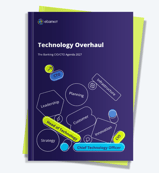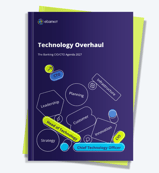Open Banking in the US and the upcoming CFPB 1033 regulation
The US financial landscape is rapidly evolving with the emergence of Open Banking, which provides a wealth of advantages for consumers, financial institutions (FIs), and fintech companies alike.
In the U.S., the CFPB 1033 regulation shared on October 22nd, 2024, is set to further drive the adoption of Open Banking. Similar to the European Union’s PSD2 regulation, which created a standardized framework for Open Banking, Section 1033 aims to foster innovation by encouraging competition among financial institutions and enabling consumers to take advantage of new financial technologies.
CFPB 1033 requires banks to offer secure access to customer data, allowing consumers to share their financial information with trusted fintechs and third parties. This paves the way for account aggregation services and enables financial institutions to deliver more comprehensive financial solutions.
At least 100 million US consumers have authorized a third party to access their account data.
- The Consumer Financial Protection Bureau (CFPB), December 2023
The road to compliance: a 6-step manual
1. Secure APIs
Navigating compliance with Section 1033 presents numerous challenges for financial institutions, the foremost being the development of secure API frameworks that enable data sharing.
Financial institutions can adopt Financial Data Exchange (FDX) standards in order to establish clear consent processes when developing secure APIs.
These standardized APIs would guarantee that data is consistently and securely transmitted across the financial ecosystem, reducing risks and boosting efficiency for both consumers and third-party providers.
2. Strenght data security
Data is crucial in Open Banking, making it imperative to enhance data security measures. Financial institutions should implement industry best practices, including encryption, multi-factor authentication, and continuous monitoring, to achieve the highest standards of data protection.
Additionally, they must stay updated on the latest security protocols to mitigate risks effectively. This includes conducting regular security audits, implementing robust access controls, and fostering a culture of security awareness among employees.
By doing so, financial institutions can offer the best level of security for their clients' data, ensuring trust and compliance in an increasingly digital financial landscape.
3. Prepare for the deadlines
Navigating new regulatory changes demands a sharp focus on compliance deadlines, as the timeline for achieving compliance can be quite stringent.
The compliance deadlines have been pushed back to give data providers and third parties additional time to meet the new requirements.
Major financial institutions, which often have more resources and infrastructure, will need to achieve compliance within a 6–12 month window following the rule’s enactment. This means they must quickly mobilize their teams, allocate necessary resources, and implement the required changes to meet the new standards.
On the other hand, smaller financial institutions, which may not have the same level of resources or technical capabilities, are granted a more extended period. Moreover, the smallest institutions, such as banks and credit unions with assets under $850 million, are exempt from the data provision rule.
This extended timeline allows smaller institutions to gradually adapt their systems, processes, and policies to ensure full compliance without overwhelming their operational capacities.
However, both large and small financial institutions must remain vigilant and proactive in their approach to meeting these deadlines, as failure to comply could result in significant penalties and reputational damage.
4. Regulatory updates
Financial institutions must keep up with the latest regulatory requirements to mitigate risks effectively and keep abreast of regulatory developments.
The scope of data largely remains unchanged from the draft rule, and we can anticipate further regulations in the future to cover additional products and services.
This involves continuously monitoring changes in legislation, guidelines, and industry standards that could impact their operations. By doing so, they can proactively adjust their strategies and ensure compliance with new rules as they emerge.
Forging alliances with compliance specialists, such as legal advisors, regulatory consultants, and industry experts, will also significantly bolster the transition to Open Banking in the United States and make it smoother.
These specialists can provide valuable insights, assist in interpreting complex regulations, and offer tailored solutions to address specific compliance challenges.
Additionally, they can help institutions develop comprehensive compliance programs, conduct regular audits, and provide training to staff, ensuring that all aspects of the organization are aligned with regulatory expectations.
This collaborative approach not only enhances the institution's ability to navigate the regulatory landscape but also builds a robust framework for sustained compliance and operational excellence.
5. Upgrade technologies & processes
Reviewing and updating existing systems, policies, and agreements with third parties will be key to developing new functionalities to meet these new requirements. This process involves a comprehensive assessment of current technological infrastructures to identify any gaps or vulnerabilities that could hinder compliance.
Financial institutions must ensure that their systems are capable of supporting secure data sharing and integration with third-party applications. Policies must be revised to align with the latest regulatory standards, ensuring that data privacy and security protocols are robust and up-to-date.
Additionally, agreements with third-party service providers need to be scrutinized and potentially renegotiated to ensure that all parties are adhering to the new compliance requirements. This may include setting clear expectations for data handling, security measures, and accountability.
By thoroughly reviewing and updating these critical components, financial institutions can not only achieve compliance but also enhance their operational efficiency and customer trust in the evolving landscape of Open Banking.
6. Collaborate with industry experts
Collaboration with industry groups, subject matter experts, and standard-setting bodies is essential for driving and expediting the implementation process. ebankIT, through its highly flexible, agile, and core-agnostic platform, empowers U.S. financial institutions to seamlessly achieve compliance with Section 1033.
Built on a composable and modular architecture, ebankIT allows for smooth integration with any core banking system, enabling institutions to adapt rapidly to evolving regulatory requirements and stay ahead in a competitive market.
ebankIT has extensive experience in implementing Open Banking solutions across Europe, ensuring full PSD2 compliance; bringing a proven track record of delivering secure, innovative, and scalable digital solutions.
By partnering with industry leader MX, ebankIT combines its global expertise with cutting-edge data aggregation technology, offering U.S. financial institutions a powerful and comprehensive solution to embrace Open Banking and transform their customer experience in the U.S. market.
Navigate regulatory requirements with ebankIT
With the initial CFPB's compliance deadline established, it's crucial to thoroughly explore the technical specifics and performance criteria to ensure that APIs, processes, and interfaces align with the final regulations. Financial institutions will seek technology partners to achieve rapid, efficient, and cost-effective compliance with Section 1033.
Enter ebankIT, an omnichannel digital banking platform prepared to deliver a secure, scalable, and compliant Open Banking solution.
A hub of operations
Financial institutions can establish themselves as the premier financial hub by securely sharing data and unifying all customer accounts in a single place.
ebankIT simplifies API integration and delivers valuable data insights powered by MX to help banks understand and fulfill customer needs while promoting innovation within a strong digital ecosystem.
With access to more comprehensive financial data through account aggregation, banks can offer personalized financial advice or products that better suit customers’ financial situations.
Enhanced customer experience
Leveraging ebankIT’s Open Banking technology, financial institutions can securely share customer-authorized data with third-party applications without sharing credentials.
Customers can manage their consent at any time through mobile or online banking platforms, enhancing transparency and customer experience while maintaining data security. This flexibility allows users to easily grant or revoke permissions for third-party applications, ensuring they have full control over who can access their financial information.
At the same time, banks can track app usage, check connection health, and manage access requests. This capability enables financial institutions to monitor the performance and security of integrated applications, ensuring that any potential issues are promptly addressed.
Personalized financial guidance

Thanks to Open Banking, financial institutions will be empowered to take personal financial management to the next level.
Through the integration of AI and API, ebankIT’s Digital Concierge delivers personalized notifications and tailored financial advice, ensuring each customer receives guidance customized to their unique financial needs.
With cutting-edge data analytics, ebankIT empowers banks and credit unions to deliver tailored offers. Financial institutions can adapt their strategies in real-time, meeting the needs of a new generation.
Furthermore, ebankIT enables financial institutions to enhance user engagement through game mechanics and third-party integrations, using data to create a more engaging and personalized financial experience and granting personalized rewards.
A large ecosystem of partners
The ebankIT Omnichannel Platform, supported by strategic alliances like MX and advanced technologies, provides an Open Banking marketplace that enables financial institutions to swiftly introduce new features and services.
In collaboration with MX, ebankIT offers secure and compliant APIs, enabling institutions to effortlessly scale across aggregators. Opting for ebankIT positions your institution at the forefront of Open Banking innovation, fostering growth and providing an exceptional digital banking experience.
To learn more about implementing a successful Open Banking strategy, download the report below.






%20without%20SAM%20-%20Maturity%20Level%20-%202-KO%20edit.webp?width=160&height=57&name=67768-ebankIT%20Platform%20-%20CMMI%20Development%20V2.0%20(CMMI-DEV)%20without%20SAM%20-%20Maturity%20Level%20-%202-KO%20edit.webp)
